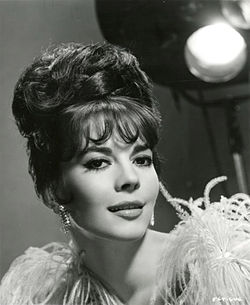
The beehive is a hairstyle in which long hair is piled up in a conical shape on the top of the head and slightly backward pointing, giving some resemblance to the shape of a traditional beehive. It is also known as the B-52 due to a resemblance to the distinctive nose of the Boeing B-52 Strategic Bomber. [1] The 1980s band The B-52's took their name from the hairstyle, which was worn by members Cindy Wilson and Kate Pierson. [2]
